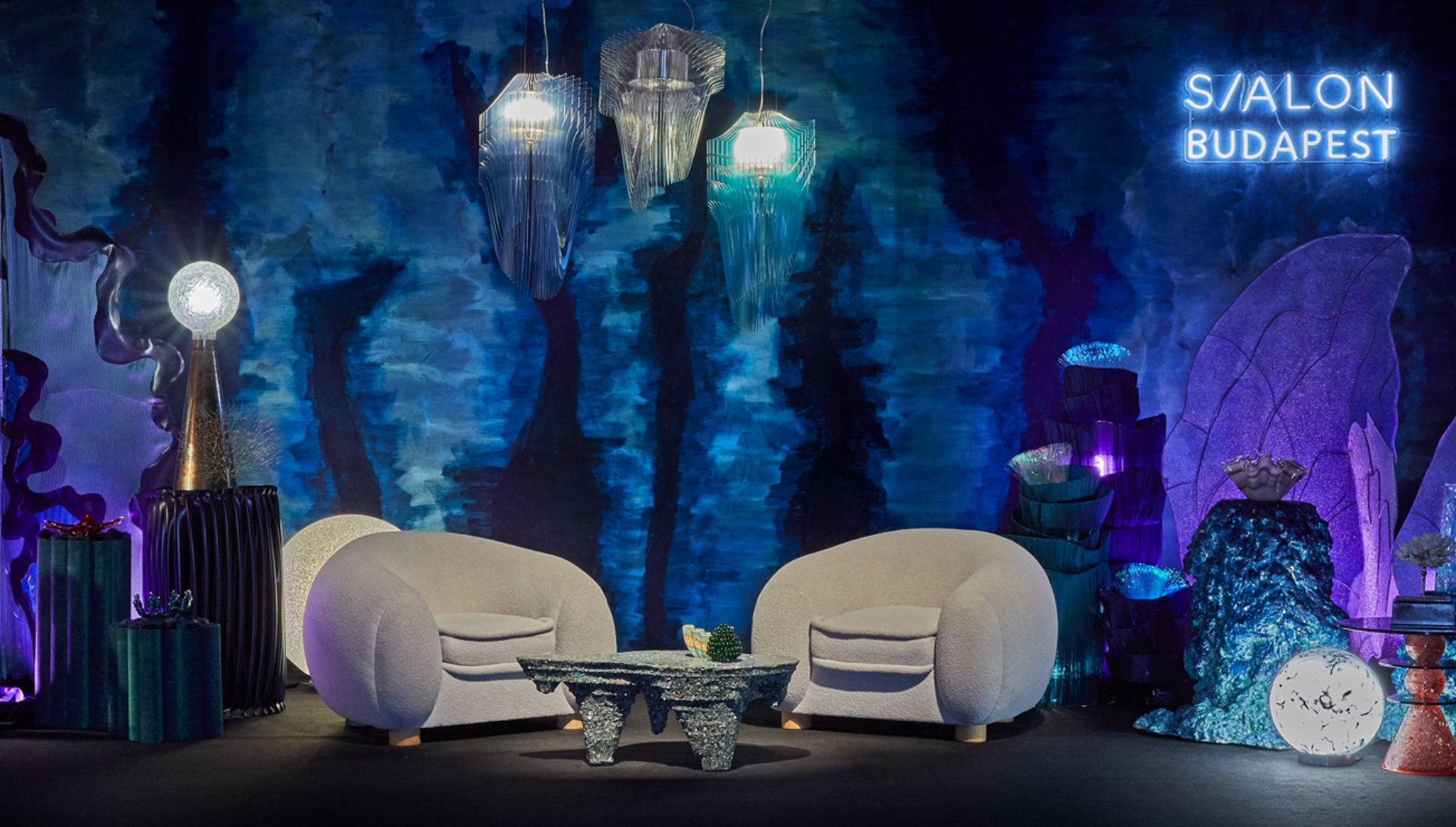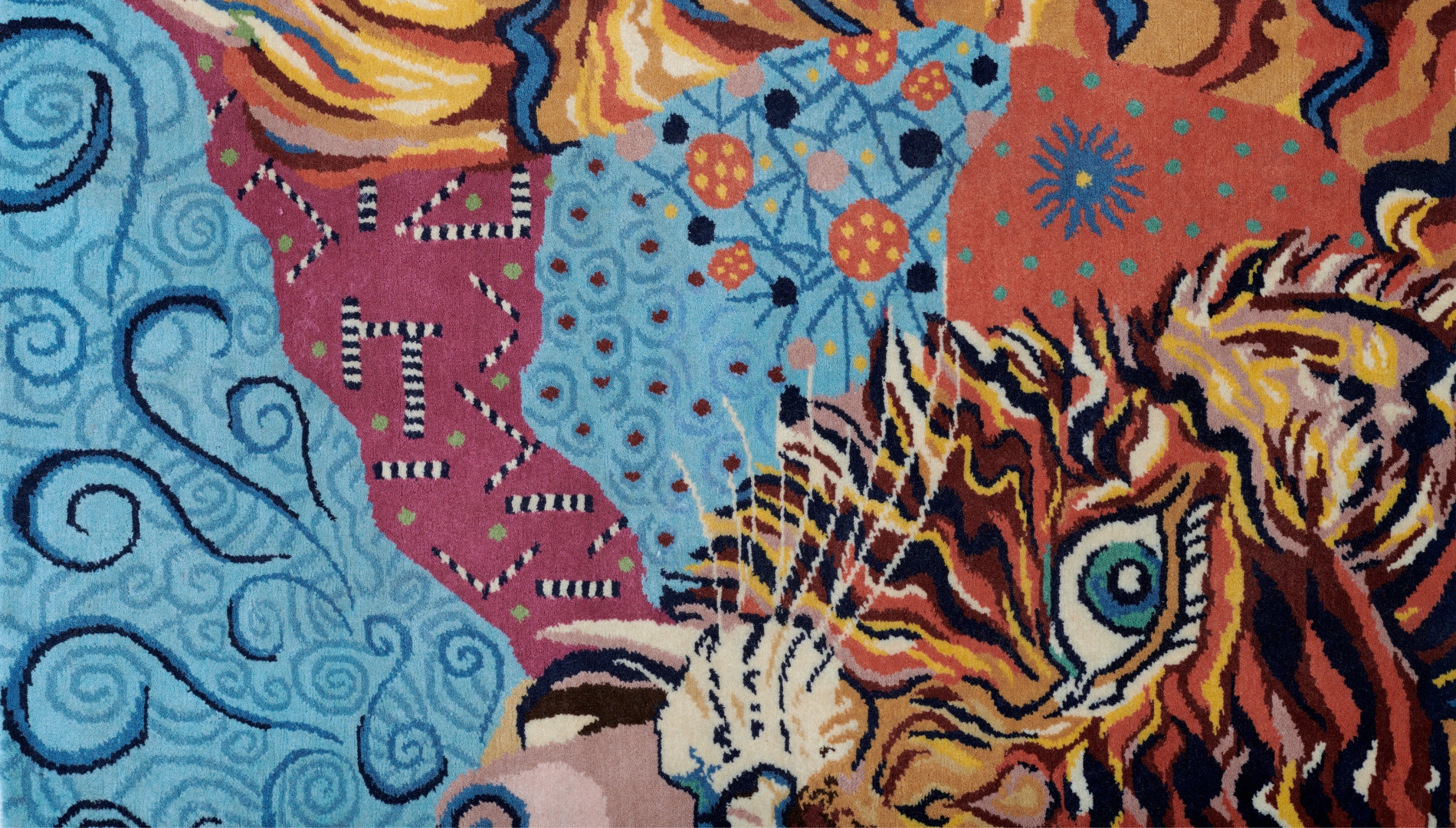
Hanging by a thread: saving wild tigers with design
Swiss brand Christian Fischbacher joined forces with artist and designer Rebecca Duckett-Wilkinson and Simon Clinton of the Save Wild Tigers foundation to help a noble cause.
For more than two centuries, Christian Fischbacher has been at the heart of the textile industry; their interior fabrics, carpets and home accessories are made for luxurious interiors with personality. Since 2008, the company has been run by Michael Fischbacher and his wife Camilla. In that year, Camilla took on the role of creative director with a very bold approach, introducing a new line of innovative fabrics that were recycled out of PET bottles, while changing the visual language of the company.
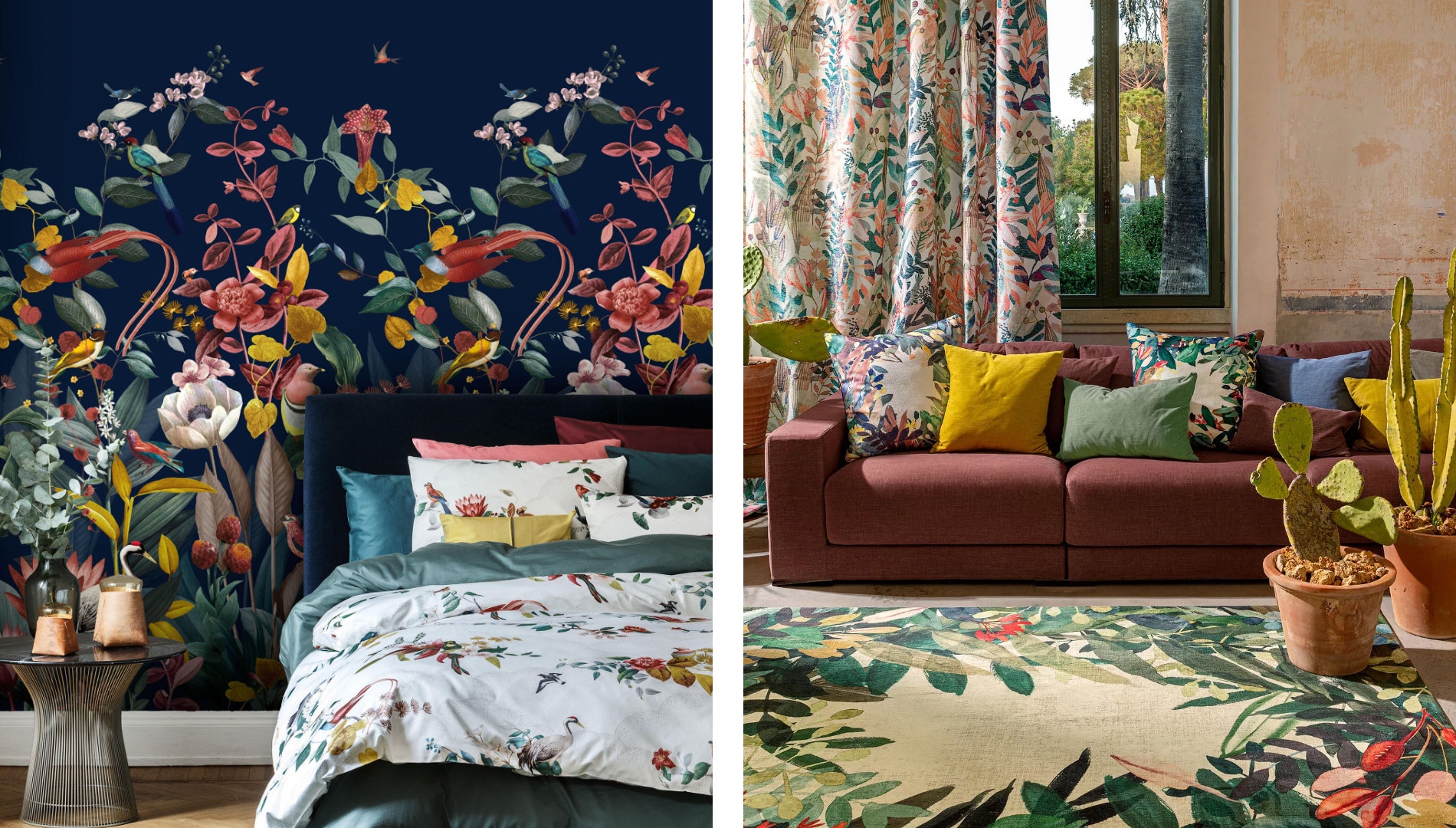
The brand has proven to be a torchbearer of sustainable design, not only through its progressive use of materials, but also by taking on a role in protecting magnificent animals endangered by capitalist greed and superstitious ambition: wild tigers.
A motif, drawn up in isolation led to the collaboration.
The quest has blossomed from a friendship between Camilla, Malaysian born artist Rebecca and Save Wild Tigers founder Simon, who spent part of his childhood in Malaysia. The numbers are daunting: the official figure states that there are only 150 wild tigers left in the jungles of Peninsular Malaysia. Deforestation of their natural habitat is a great threat, but illegal hunting, poaching and trafficking are the main reasons all wild tiger numbers are plummeting. The main objective of Save Wild Tigers is to raise awareness about the illegal trade in wild tiger products.
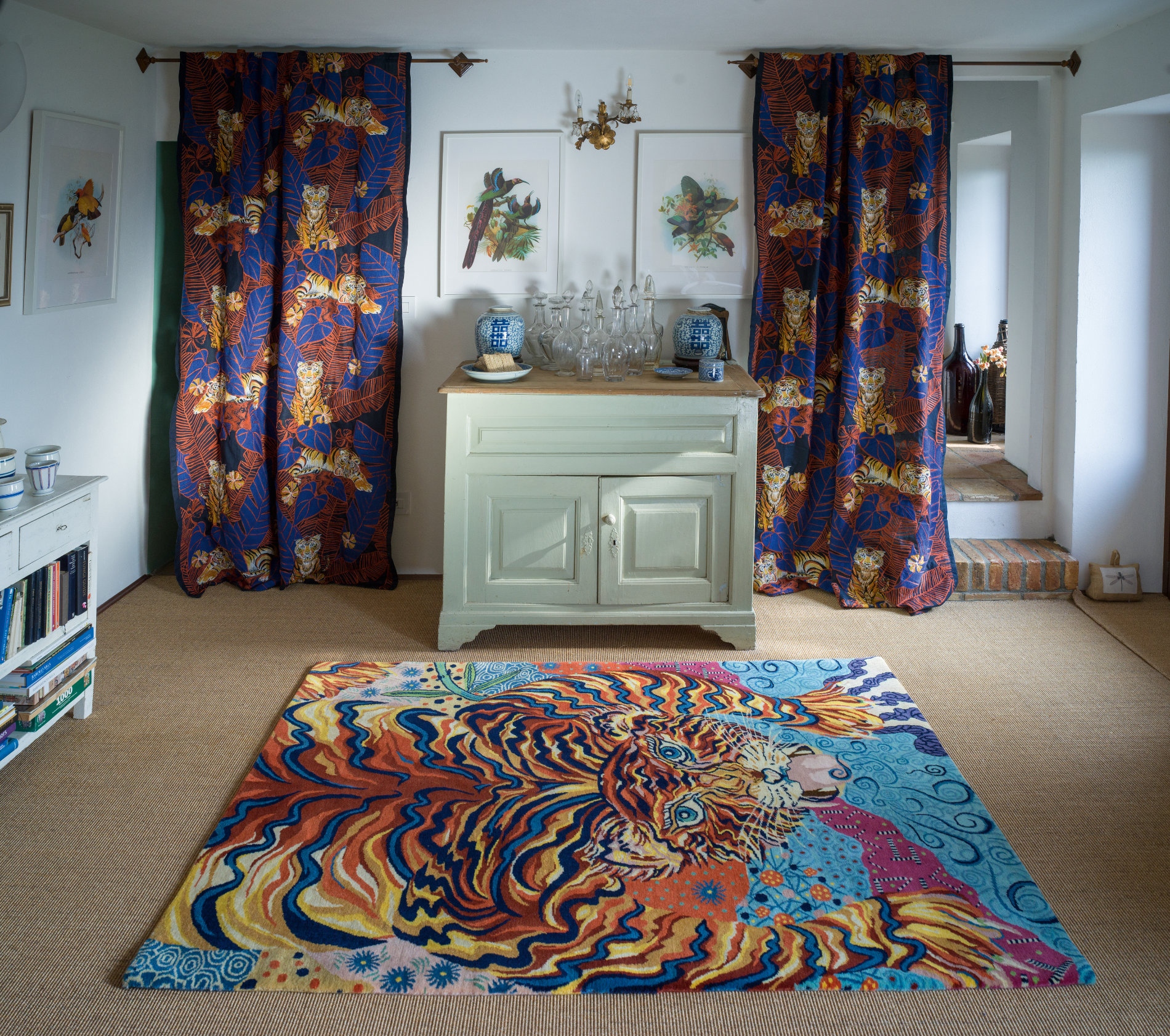
In this interview, you’ll learn more about a leading textile brand’s heritage and keys to success, the motivation of a truly talented and driven artist and the background of an important organization through a conversation with three pioneers of environmental responsibility: Camilla Douraghy Fischbacher (CDF), Rebecca Duckett-Wilkinson (RDW) and Simon Clinton (SC).
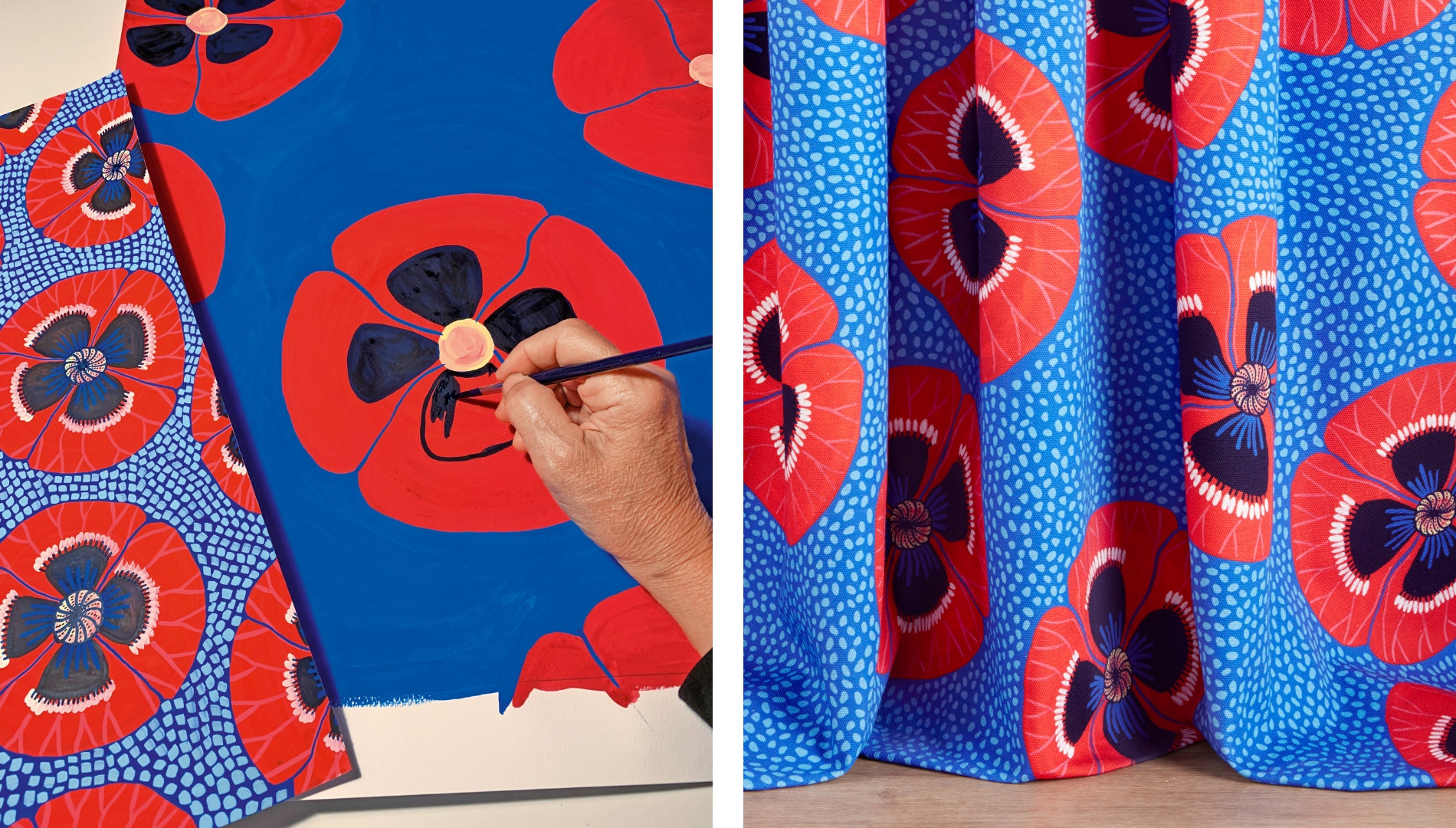
Based in Switzerland, Christian Fischbacher maintains a strong international presence, combining multi-cultural traits in its products and creative leadership. What are these defining influences?
CDF: We have customers all over the world and we don’t focus our design on just one market. What sells locally often depends very much on our partners and their customers. We often refer to our Swiss roots in our designs and develop them in new contexts. This combination of tradition and a very cosmopolitan outlook is typical of Christian Fischbacher.
It is important to stay true to your own signature.
Personally, I like to be inspired by the people, regions and cultures I get in touch with on my travels. This is how my long-standing friendship with Rebecca Duckett-Wilkinson came about.
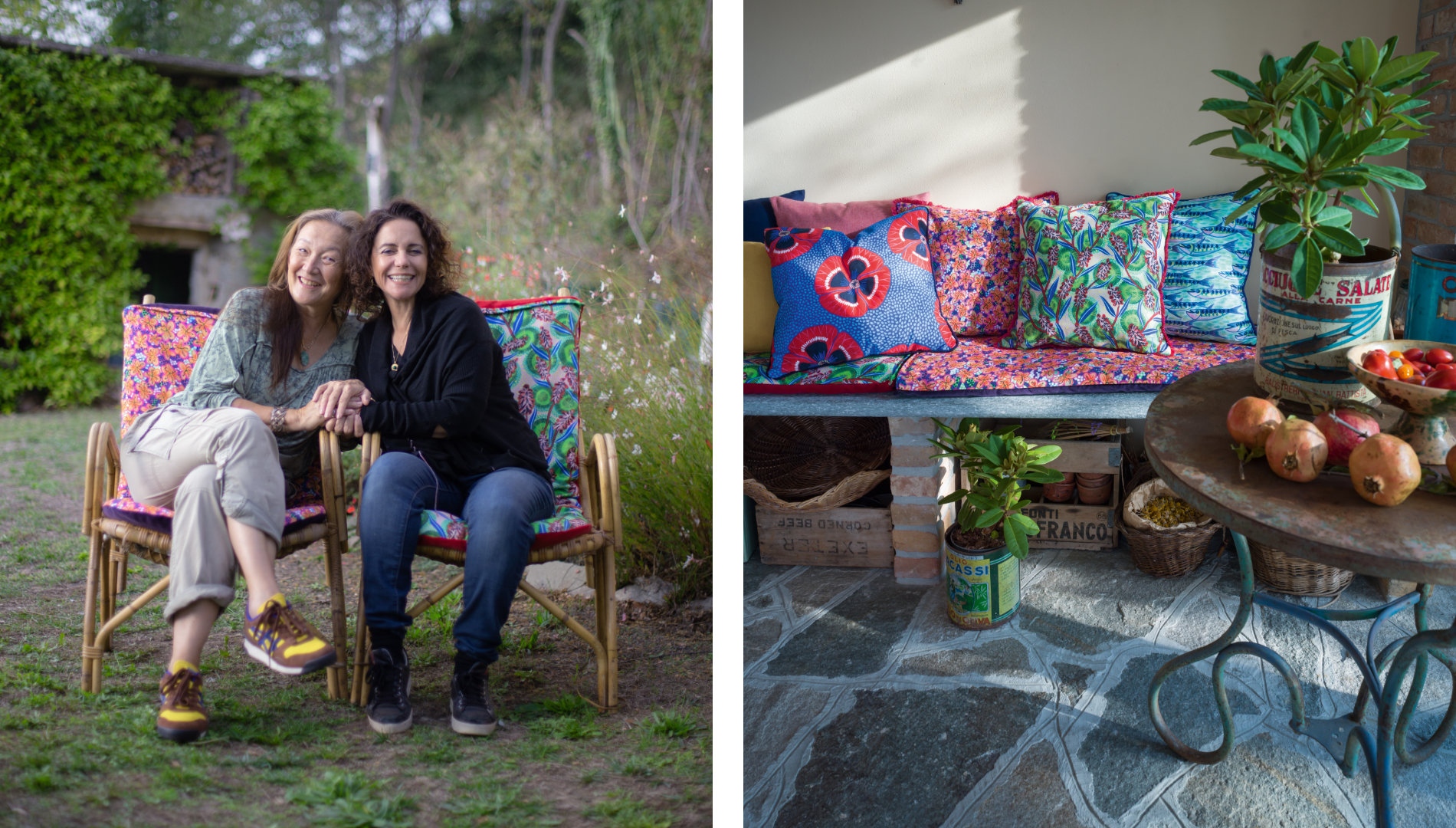
I love discovering new things and finding out how local people live, how they think and act, what their passions are. It enriches me so much. Christian Fischbacher’s collections often have a thematic focus. You could almost say that they are a kind of documentation of these impressions and influences.
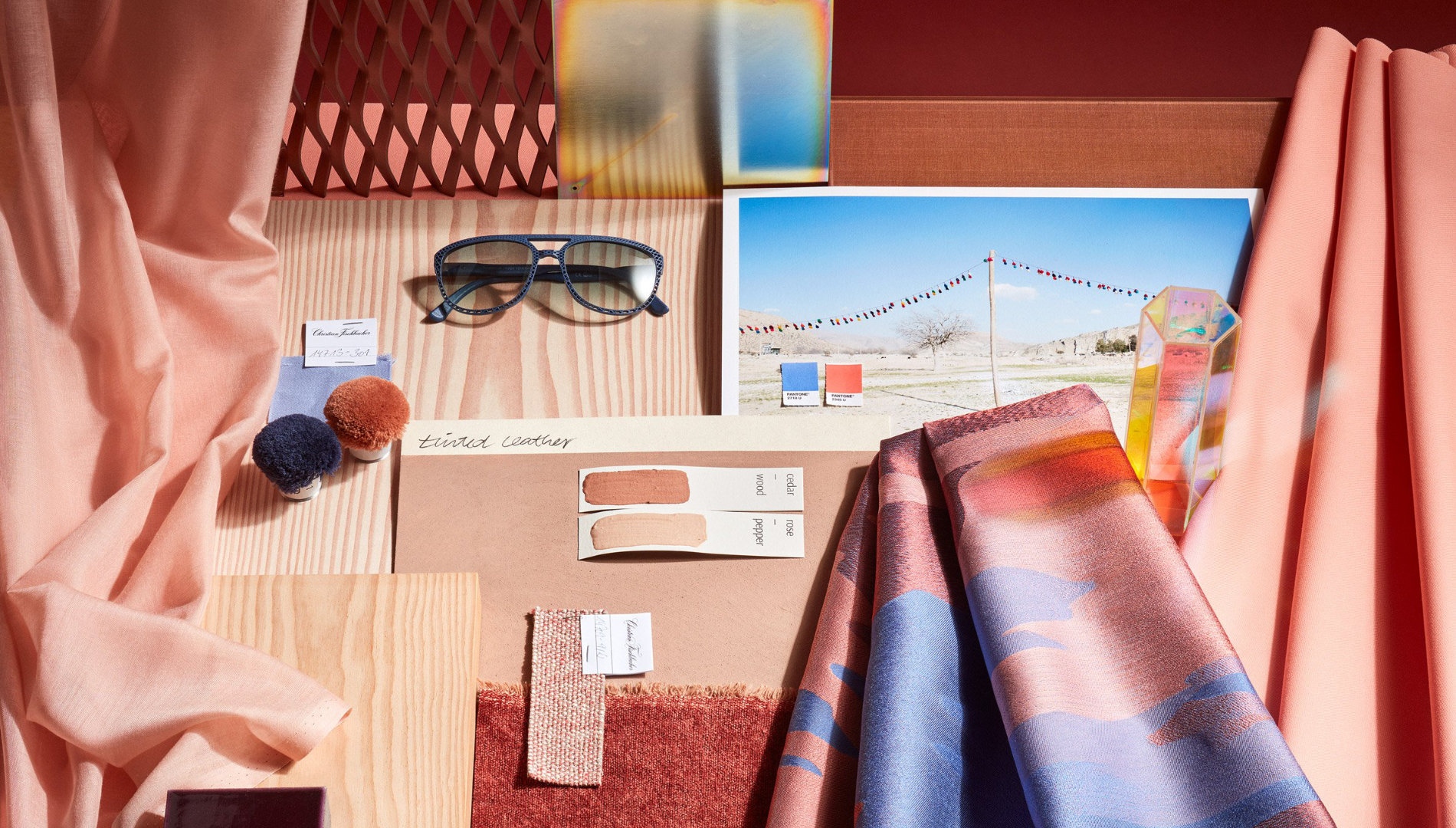
In what ways can a company be socially or environmentally responsible?
CDF: Brands play a vital role in raising awareness of social and environmental issues. As ambassadors for their products and values, brands can use their reach to raise consumer awareness. This can be done, for example, through targeted marketing campaigns aimed at informing and educating consumers about sustainable practices.
Brands can also use symbolism and design to convey a specific message and encourage consumers to think and act.
Social and environmental responsibility is not a static concept, but an ongoing process. Businesses should continually evolve and seek innovative solutions to create positive change and promote sustainable practices. Through their commitment to social and environmental issues, companies can play an important role in creating a more sustainable and aware world.
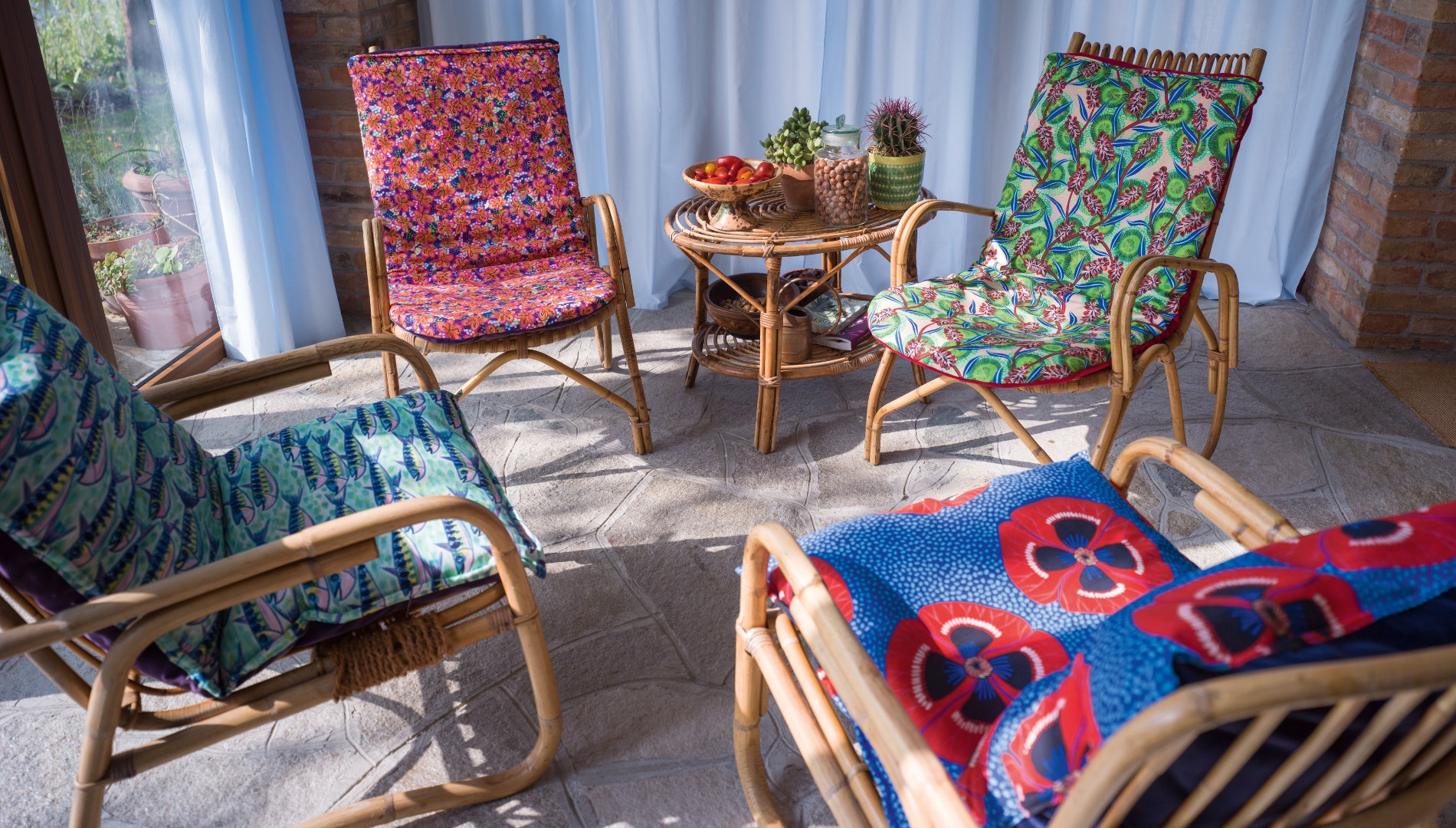
Launched in 2009, the recycled line BENU was the first of its kind, setting new sustainability standards in the industry. What should we know about BENU?
CDF: It all started with a weaver who handed me an unimpressive, stiff piece of fabric. He was sure I wouldn’t like it. But when he mentioned that the fabric was made from PET bottles, I was hooked. That was the basis for the first collection in 2009: The BENU® PET collection uses polyester obtained from post-consumer PET plastic bottles. The plastic bottles are collected, cleaned, ground, melted down and spun into high-quality polyester yarn. Compared to the production of conventional polyester, the production of BENU recycled polyester requires significantly less energy and chemicals, reducing the impact on global warming.
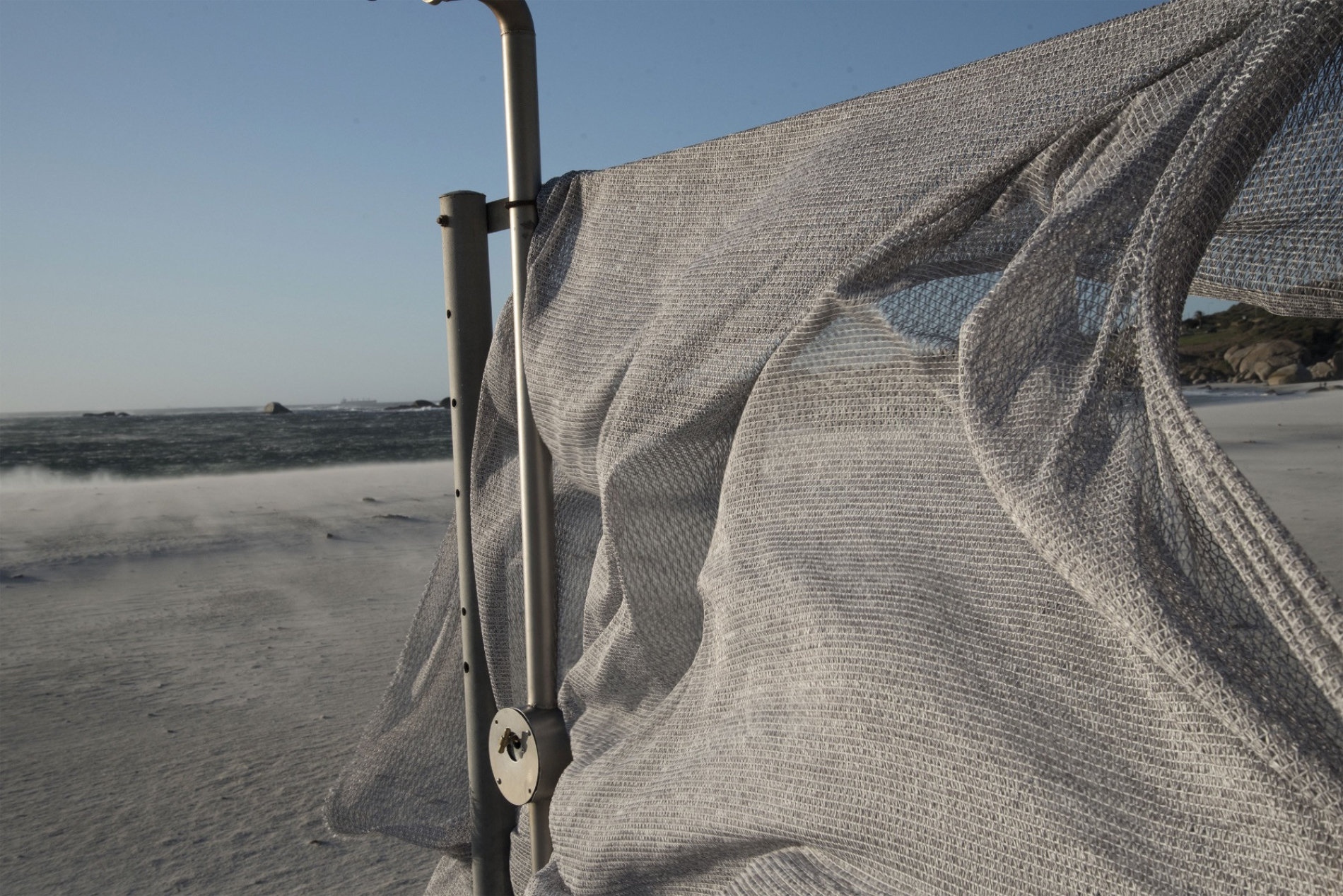
We didn’t stop there, we developed the BENU® Recycling collection, which now consists of four ranges: BENU PET, BENU SEA, BENU INDUSTRY and BENU YARN.
In addition to a great feel, which many people think is impossible with recycled fabrics, we have even managed to integrate the flame retardant function into our BENU fabrics.
As we continue to develop our collections, we are expanding our ability to utilize other types of waste and make our contribution to the environment. In the BENU® SEA collection, plastic waste collected from the sea is processed into a hard-wearing polyester yarn in a resource-conserving process, while in the BENU® INDUSTRY collection we use recycled yarn remnants from the manufacture of Trevira polyester yarn. The fabrics in the BENU® YARN collection are made from recycled textile waste from the fashion industry. The used cuttings from ready-made garments are sorted by color, shredded back into their original fiber form, carded and spun into a new, high quality recycled yarn.
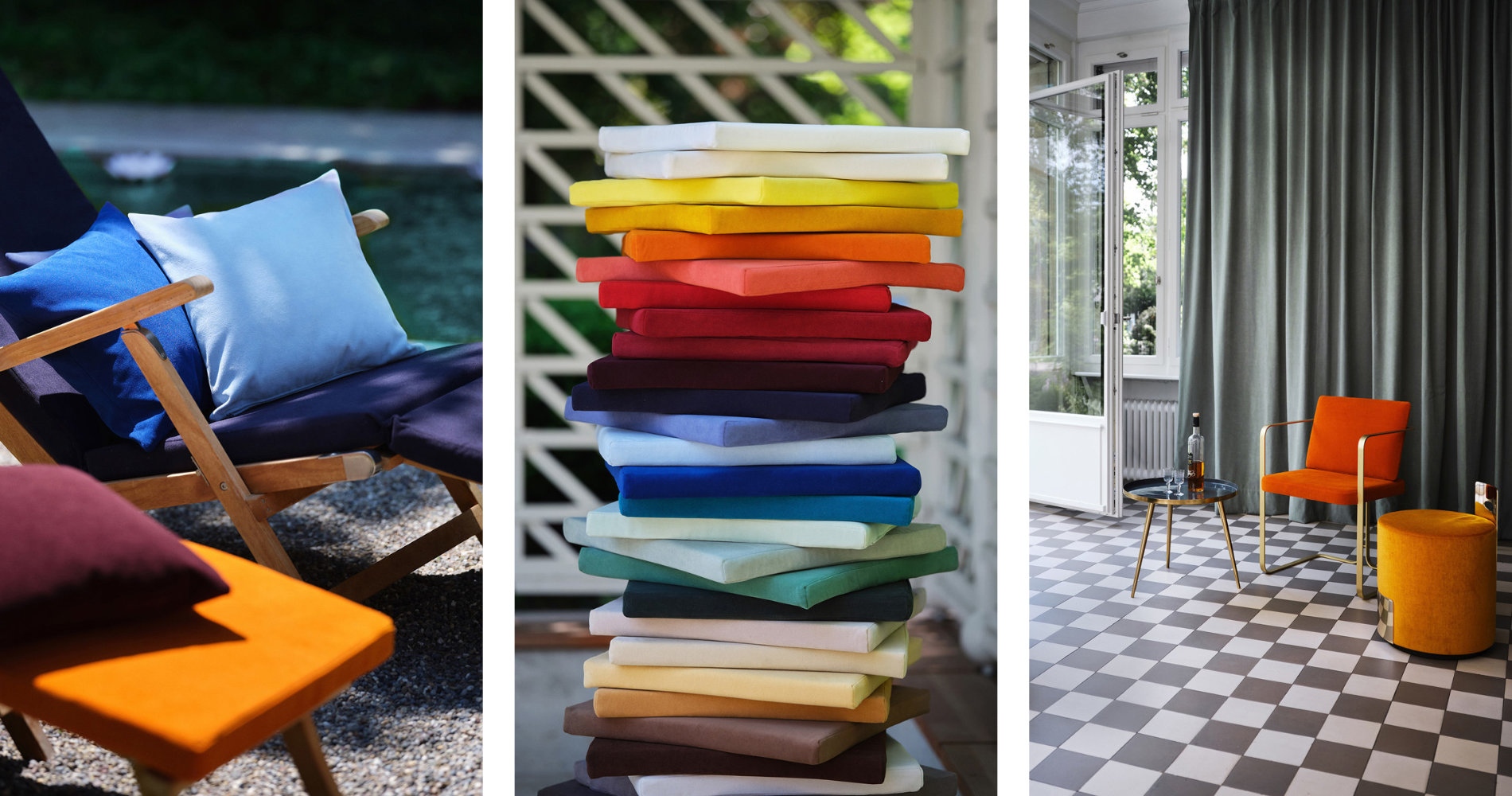
There are so many ways to give new life to used material.
I can’t wait to see what we discover next. BENU, by the way, is named after the bird BENU in ancient Egyptian mythology. It is reborn from its ashes like a phoenix. It fits perfectly. BENU means new life and is pronounced "be new". The name says it all.
What is the latest novelty of Christian Fischbacher? What are the key directions the brand is expected to take in 2023 and 2024 in regards to product releases, collaborations or solutions?
CDF: In the years to come, we will continue to look for great collaborations to expand our creative horizons. We are now on the way to the seventh generation of Christian Fischbacher, a generation that is more international than any before. So internationalization will continue to play a growing role for us and will continue to spread in the collections.
Collaborations are also always a great opportunity for us to discover new sustainable materials from which to make textiles.
This is the case with our current capsule collection ’Capri’, which we created in collaboration with the Italian interior designer and architect Giuliano Andrea dell’Uva. Most of the fabrics are made from the sustainable material hemp. The Neapolitan island of Capri was a fantastic inspiration, with its maritime lifestyle and breathtaking scenery.
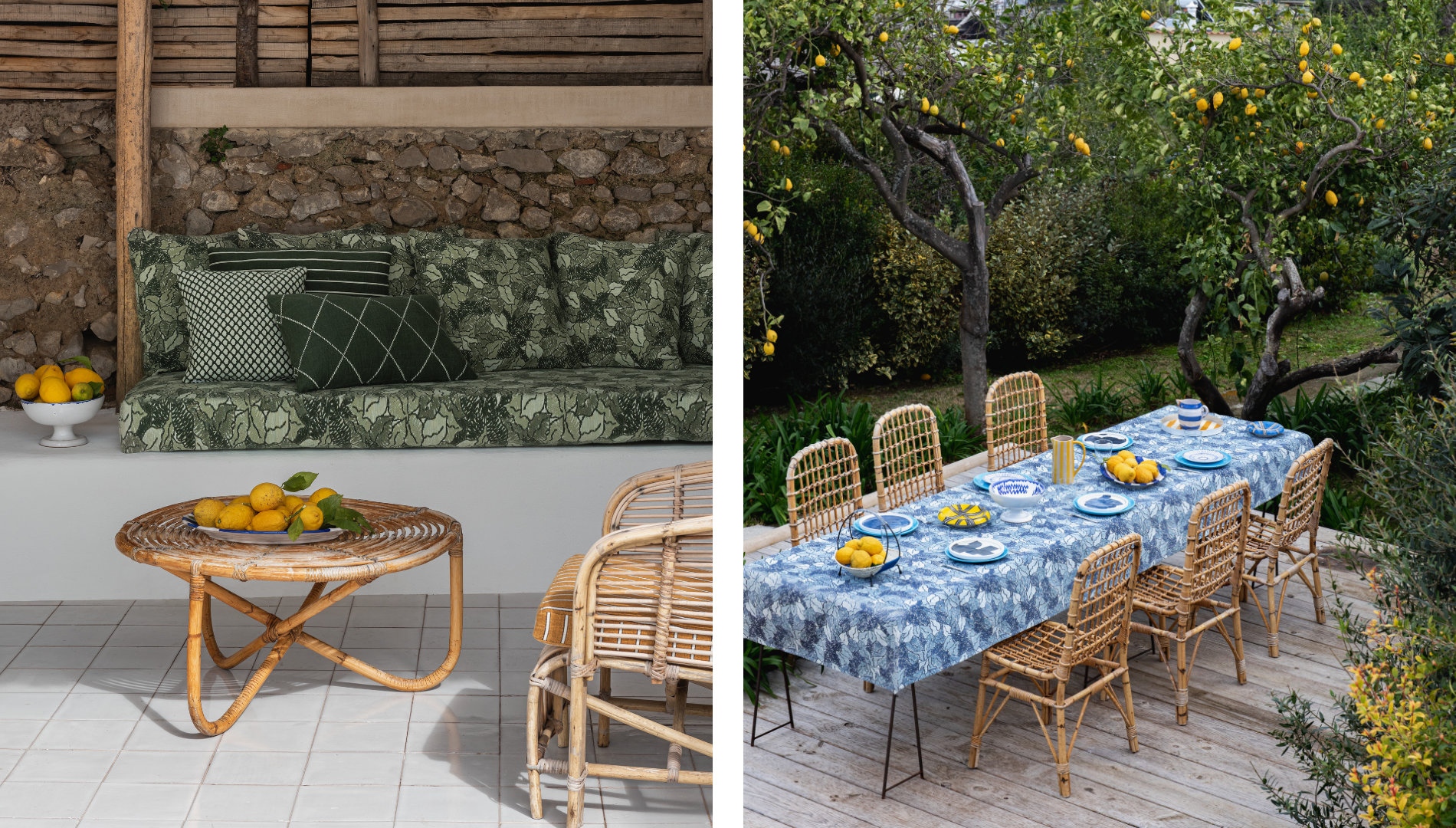
100 Patterns in 100 Days is a capsule collection designed by Rebecca Duckett-Wilkinson. What was the concept of the collection?
CDF: Surprised by the pandemic in the spring of 2020, Rebecca decided to paint 100 patterns in 100 days, because she was stuck in Piemont and could not travel home. She used the unwanted time to do something creative and positive, that radiates joy of life.
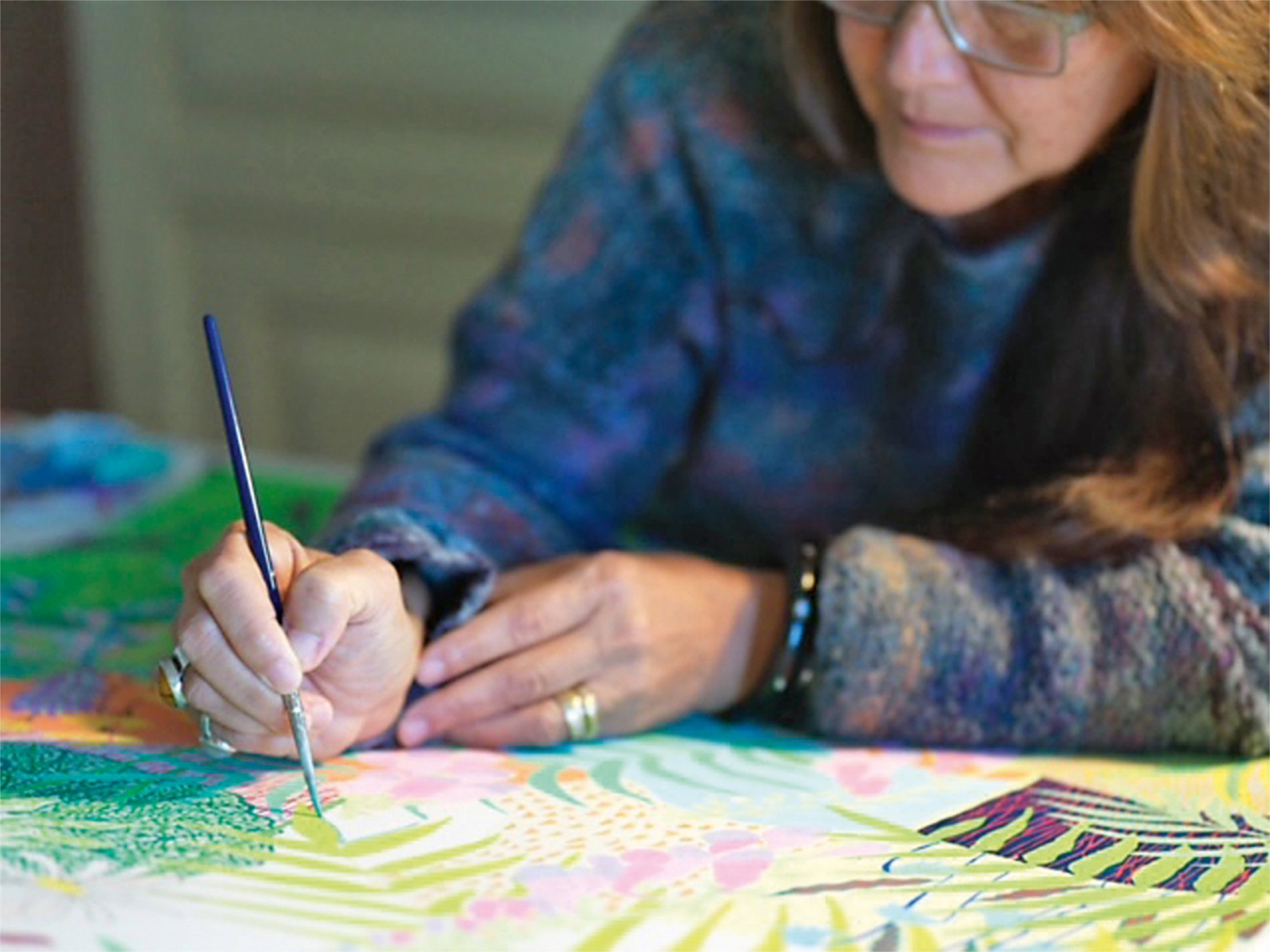
When she showed me her work, I knew immediately that we had to translate it into textiles. As well as all the fantastic designs, I was particularly struck by the energy and power of the tiger motif. Rebecca’s idea of using the proceeds to support the Save Wild Tigers Foundation excited me. Although the tiger is such a majestic animal and even the symbol of Malaysia, it is still in great danger. In this way, we can help protect the tiger. That touched me deeply.
The tiger designs of the capsule collection, DAWON and HARIMAU, were designed to highlight a commitment to sustainable living and the protection of wildlife.
A percentage of every sale of the HARIMAU rug and the DAWON decorative cushions goes to support Save Wild Tigers. What is the main objective of this organization?
SC: Clearly developing high profile awareness campaigns are a central pillar for us, indeed working with artists across all genres creating inspiring and positive messages via their craft encouraging action, is vital. However, fundraising is still critical which is why the support of Rebecca and Christian Fiscbacher in donating funds on the back of this exciting partnership is really important and greatly appreciated.
RDW: The fabric, the DAWON cushions and the HARIMAU carpet show strong, mighty tigers. I hope that people who are attracted to the potent symbol of the tiger will look to these designs by Christian Fischbacher to add status to their interiors, not only as an alternative to real tiger skins, but to show support for the conservation of wild tigers.
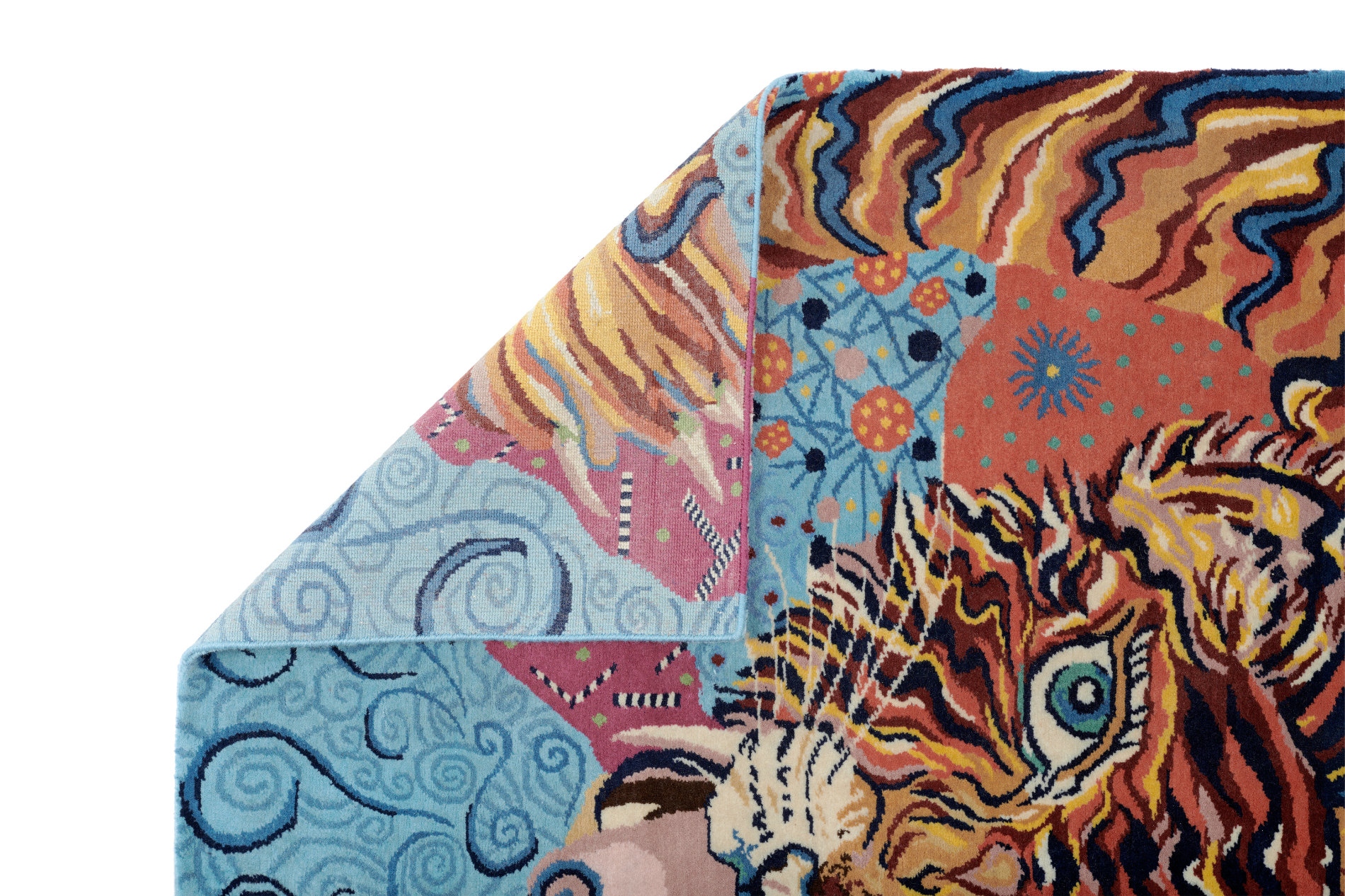
Personally, I am overjoyed with the collaboration between Christian Fischbacher and Save Wild Tigers in order to help raise awareness to stop buying wild tiger products.
The Malayan tiger takes central stage on these fabrics. Rebecca, Simon, how would you describe your personal relationship with these animals, their ecological and cultural significance?
RDW: I have always been very attached to the tiger, on many levels. I was born in the Chinese year of the Water Tiger, so it is my zodiac animal. Moreover, I am Malaysian, and the tiger – Harimau – is the country’s national icon. On the Malaysian Coat of Arms two upright tigers with the shield between them represent strength and courage. So the tiger is always on my mind.
The importance of the tiger at the top of the food chain in tropical jungles, cannot be understated. Without a top predator, the rest of the chain breaks down. Their presence in the wild is key to the maintenance of a healthy, balanced and bio-diverse jungle.
SC: The global symbolism and resulting impact of tigers across cultures and generations – from the arts, religions, through to the business world – is huge, probably unequaled by any other species. Over the years, tiger imagery has been used extensively for marketing purposes, think about the ‘tiger in your tank’ campaigns of ESSO, the Tiger Beer, the Tiger Airways, tiger prints in fashion – just to name a few. It’s time to give back or the legacy of inaction will ensure all future generations are only left with tiger images in galleries, archives and on the side of cereal packs.
If we can’t save the world’s most iconic species, then it begs the question: what does that mean for the rest of the globe’s endangered species, from blue whales to rhinos?
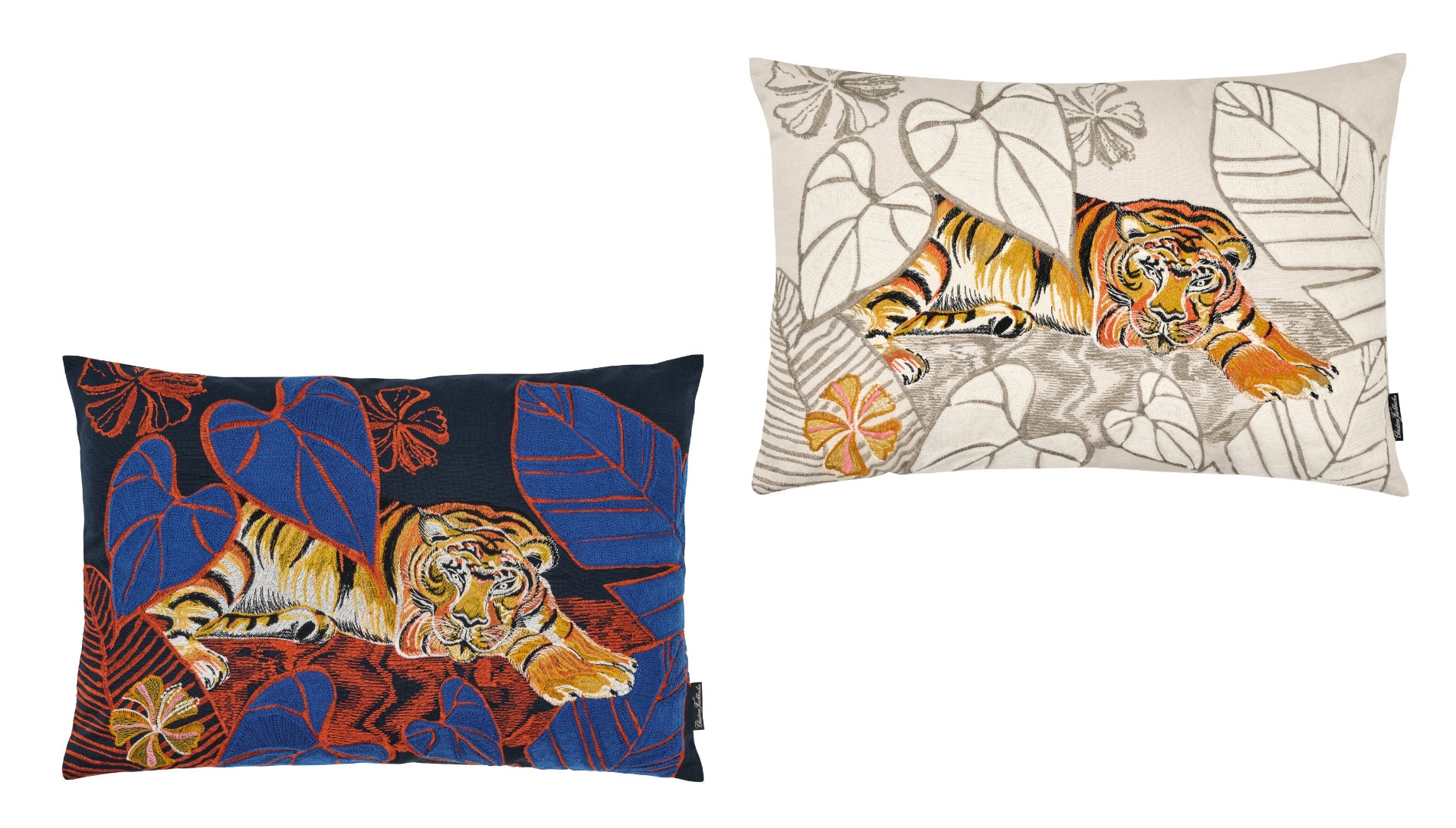
What are the most serious threats to tigers in the wild? Why are tigers hunted today? What kind of illegal products are on the market?
SC: Globally the biggest issue facing wild tiger populations is the illegal wildlife trade, followed by habitat destruction and fragmentation. Right across Southeast Asia we are experiencing a poaching epidemic driven by demand for pretty much every part of the tiger body. Tiger parts and related tiger products are often being purchased on the black market by affluent consumer groups, many in Asia, for everything from home décor to jewelry.
A vast range of products – like Tiger bone wine – are often sold as a prestigious gift for business leaders, teeth and claws used as trinkets and jewelry, their meat sold as a delicacy, the list goes on.
Additionally, a significant driver of the wildlife trade are tiger farms, often masquerading as zoos, conservation parks and even monk’s temples, boosting the demand for increasingly scarce wild tiger parts and products.
RDW: Across many cultures, the tiger is symbolic of strength and power. In Asia, the tiger represents virility, power and ultimate success. Sadly, that drives the belief that tiger products – their skin, claws, teeth, blood and even their bones – make a powerful ‘potion’ for success.
Their bones, for example, are used to make tiger bone wine for virility.
Ultimately this belief in their power has led to the Malayan Tiger being poached, hunted and trafficked to the brink of extinction. The lack of enforcement and attention to all the issues above by the authorities, shows that our great Malaysian icon is so sadly undervalued.
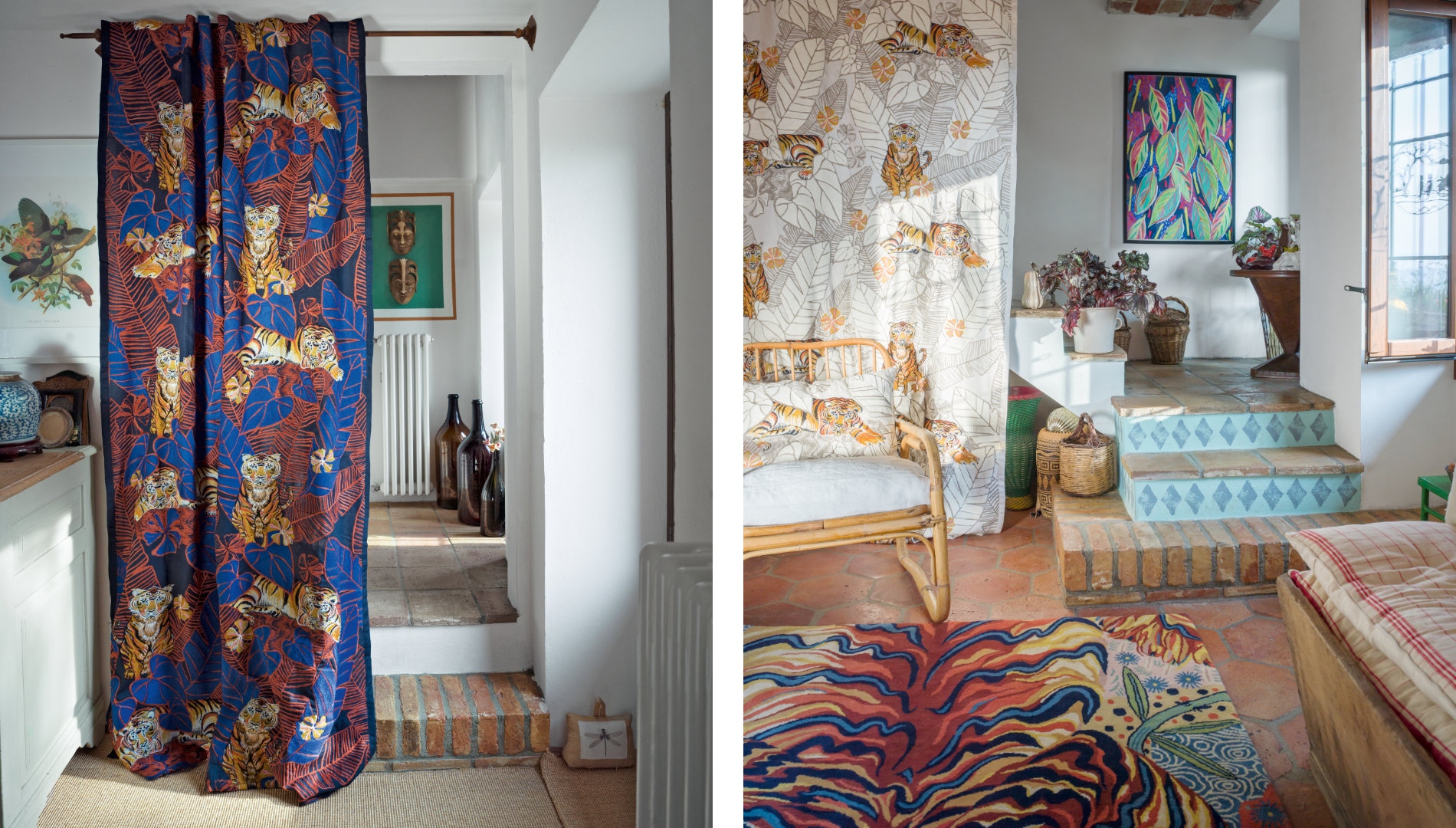
What is the most significant achievement of the organization? How can one get involved and help this cause?
SC: Save Wild Tigers was set up in 2011. We are a creative and marketing focused organization due in part to my background in the ad and marketing world. As a result, we work globally with artists and brands in developing unique collaborations, whereby we can raise awareness and funds. Over the past decade we’ve created many `world firsts` including the world’s largest tiger event `Tiger Tracks`, taking over London’s St Pancras station for a month. All helping to generate significant awareness levels as to the plight facing wild tigers.
You can purchase the Christian Fischbacher Dawon cushions and Harimau carpet, with which you are contributing directly to Save Wild Tigers. To find out more, or to get directly involved with Save Wild Tigers you should visit their website for more info. And for inspiration, subscribe to our newsletter and join us on Facebook and Instagram!

